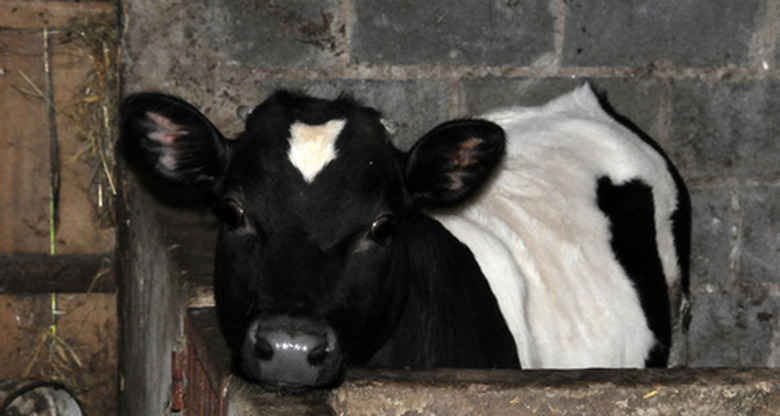How Do Manure Spreaders Work?
Livestock create a lot of waste. This waste requires proper disposal or utilization to prevent the runoff of nitrogen into local waterways. Manure spreaders evenly spread manure throughout the landscape, returning it to the soil. This supplies nutrients to crops and adds vital organic matter to the soil, which improves drainage and microbial activity.
Solid Spreaders
Spreaders come in several varieties. Solid spreaders discharge the manure at different rates depending on the ground speed of the manure spreader, the settings on the spreader and how much moisture is in the manure, according to the Utah State University Cooperative Extension. Solid spreaders need regular calibration to ensure solid animal waste is being distributed evenly.
- Livestock create a lot of waste.
- Manure spreaders evenly spread manure throughout the landscape, returning it to the soil.
Slurry Spreaders
Liquid manure requires the use of a slurry spreader. Slurry machines are calibrated once a season or whenever a different type of manure is added to the spreader. Manure inside the machine should be agitated for an even spread.
Calibration
Measure the land area you wish to spread the manure over. To determine the application rate, divide the weight of the manure by the area measurement. Manure weight is determined in tons per acre. A laboratory analysis is required to determine the nutrient content of the manure. Nutrients are then expressed in pounds per ton, or pounds per 1,000 gallons, depending on whether the manure is solid or slurry.
- Liquid manure requires the use of a slurry spreader.
- Slurry machines are calibrated once a season or whenever a different type of manure is added to the spreader.
Use
Load the spreader so the manure uniformly covers the entire area of the box. The manure is spread in one direction before tilling. Tilling is done at a 90-degree angle from the direction in which the manure was spread. The spreading pattern should be alternated every year, starting from a different gate each year or by varying the spread angle by 45 to 90 degrees.
Proper Practice
Always operate the spreader at the manufacturer's recommended speeds. Running the machine too quick may reduce the effectiveness of spread and damage the equipment. Remove twine and other debris from the machine and lubricate before each use. Reduce the speed of the spreader once it reaches the end of its load to prevent the machine from running dry and uneven.
- Load the spreader so the manure uniformly covers the entire area of the box.
- Reduce the speed of the spreader once it reaches the end of its load to prevent the machine from running dry and uneven.
